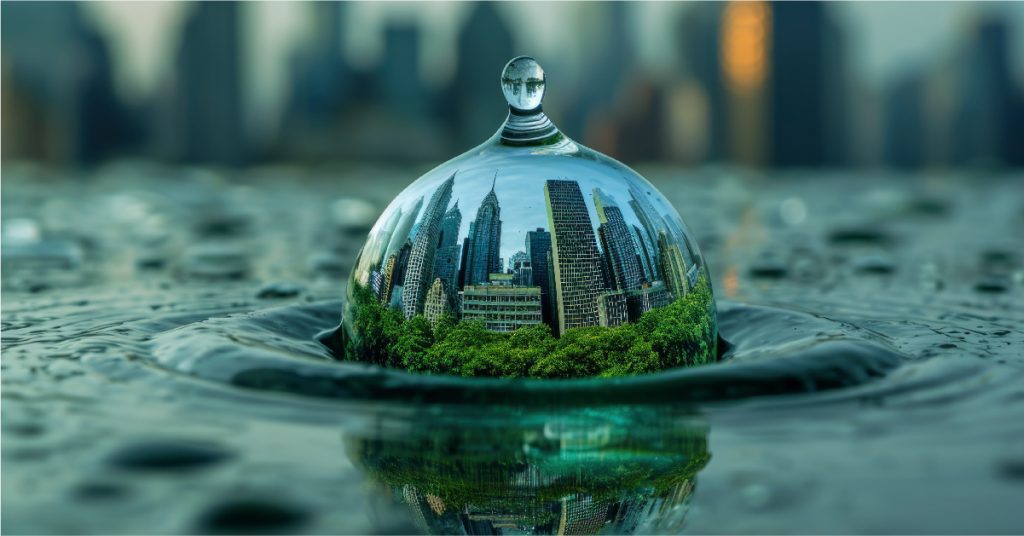Indonesia, with its vast coastline and abundant water resources, faces a paradox when it comes to securing its water. Despite being surrounded by oceans and having access to rivers and lakes, many communities struggle with limited freshwater availability. Rapid urbanization, industrial expansion, and agricultural demand have only increased pressure on freshwater reserves. To bridge this gap, brackish water has emerged as a promising alternative. With advancements in desalination and treatment technologies, Indonesia is poised to transform this underutilized source into a cornerstone of sustainable water management.
What is Brackish Water?
To understand its potential, it is essential to answer: What is brackish water? Brackish water refers to water that has a salinity level between freshwater and seawater. It typically has a brackish water salinity ranging from 0.5 to 30 parts per thousand (ppt). Found in estuaries, mangroves, tidal rivers, and coastal aquifers, brackish water is too salty to drink directly but less saline than seawater.
In Indonesia, brackish water sources are abundant, especially in coastal regions. If treated effectively, they can provide a reliable and sustainable supply of water for communities, agriculture, and industry.
The Need for Brackish Water in Indonesia
Freshwater scarcity is a growing challenge in Indonesia. Over-extraction of groundwater has led to issues such as land subsidence and seawater intrusion in coastal cities like Jakarta. At the same time, climate change and pollution are affecting rivers and lakes. Turning to brackish water offers a viable way to diversify water sources, reduce dependence on freshwater, and create resilience against shortages.
For agriculture and aquaculture, which form the backbone of Indonesia’s economy, brackish water can be particularly valuable. Many aquaculture farms already thrive in brackish environments, and with proper management, more sectors can benefit from this resource.
Desalination of Brackish Water: Unlocking Potential
The breakthrough in harnessing brackish water lies in the desalination of brackish water. Unlike seawater desalination, which requires high energy due to greater salinity, brackish water desalination is more energy-efficient and cost-effective.
Common Technologies Used:
- Reverse Osmosis (RO) – The most widely used method, where membranes filter out salts and impurities to produce potable water.
- Electrodialysis (ED/EDR) – Effective for treating water with medium salinity levels, commonly used in rural and semi-urban applications.
- Nano-Filtration (NF) – Useful for reducing hardness and removing specific contaminants while retaining beneficial minerals.
Benefits of Utilizing Brackish Water
The adoption of brackish water as a key water source brings multiple benefits:
- Reduced Stress on Freshwater: Helps conserve rivers, lakes, and groundwater by shifting part of the demand to brackish sources.
- Lower Cost than Seawater Desalination: Due to lower brackish water salinity, treatment requires less energy compared to seawater desalination.
- Resilience to Climate Change: Provides a buffer against droughts, seawater intrusion, and declining freshwater reserves.
- Support for Industry and Agriculture: Offers a stable water source for coastal industries and aquaculture.
Brackish Water and Indonesia’s Sustainable Future
As Indonesia looks to the future, incorporating brackish water into its water management strategies offers a clear path toward sustainability. By investing in desalination of brackish water, the country can reduce dependence on overexploited freshwater reserves, secure water for its growing population, and strengthen climate resilience.
From coastal cities to rural villages, this approach can transform water scarcity into water security, helping Indonesia achieve its development and environmental goals.
Ion Exchange’s Innovative Range of MEMBRANE SOLUTIONS
Ion Exchange offers a diverse range of products and solutions for water treatment, including:
- Reverse Osmosis: Reverse osmosis (RO) is a technique that converts seawater into freshwater by forcing it through specialized membranes using unique filters. These membranes keep the salt out. RO is easy to expand for more water and can use less power if we add energy-saving systems. But it’s important to clean the seawater first, so the filters work well. With energy-saving systems, we can use 30 to 40 percent less power. Therefore, reverse osmosis (RO) is an effective method for obtaining fresh water from seawater.
- Electrodialysis: Electrodialysis is a technology that employs specialized membranes and electricity to separate salts from seawater, serving purposes beyond producing drinking water. This process can also be utilized to produce salt, desalinate soy sauce, and recover valuable substances from saline wastewater. Therefore, its applications extend well beyond just drinking water, encompassing various other beneficial uses.
Conclusion
The question is no longer what brackish water is, but how effectively Indonesia can harness it. With lower brackish water salinity compared to seawater, and with technologies like reverse osmosis and electrodialysis becoming more accessible, brackish water is well-positioned to become the future of sustainable water sources in the country.
By embracing innovation, building infrastructure, and ensuring responsible use, Indonesia can make brackish water a cornerstone of its sustainable development.


